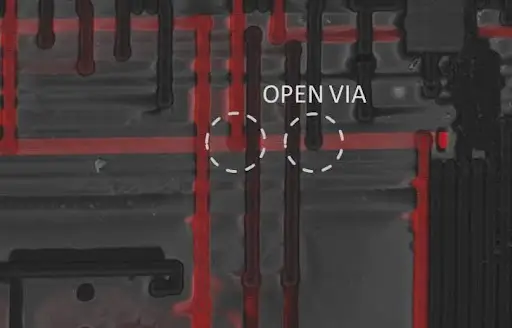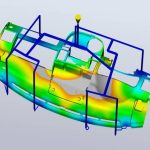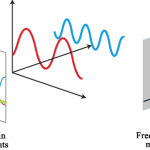Electron Beam Absorbed Current (EBAC) analysis is a cutting-edge technique used to diagnose and resolve issues in microelectronics with unparalleled precision. As microelectronics power everything from smartphones to satellites, their increasing complexity makes them more susceptible to hidden defects that can compromise performance, reliability, and safety.
EBAC analysis plays a critical role in identifying these defects by providing detailed insights into the internal workings of electronic circuits. This advanced diagnostic tool not only enhances the resilience of microelectronics but also paves the way for the development of robust and reliable devices, which are essential for industries relying on high-performance electronics in an interconnected world.
The Basics of EBAC: A Precision Analysis Tool
EBAC is an advanced failure analysis technique used to investigate electrical pathways in microelectronics. It works by directing a focused electron beam onto a sample, inducing a localized current flow. By measuring this current, EBAC can reveal detailed information about electrical conductivity, pinpointing defects such as open circuits, short circuits, and resistive pathways.
Key Capabilities of EBAC
- Localized Defect Identification: Detects electrical faults with high spatial resolution.
- Pathway Characterization: Maps current flow within complex integrated circuits.
- Non-Destructive Analysis: Preserves the sample’s integrity for further testing.
- Material and Process Insights: Highlights issues in material properties or manufacturing processes.
These features make EBAC indispensable for diagnosing issues in miniaturized components where traditional methods often fall short.
Challenges in Ensuring Microelectronics Resilience
As microelectronics become smaller and more powerful, ensuring their resilience requires overcoming several challenges:
1. Miniaturization of Components
Shrinking device sizes make defect detection increasingly difficult. Traditional inspection tools often lack the resolution needed to analyze nano-scale features.
2. Complexity of Integrated Circuits
Modern devices incorporate billions of transistors and intricate interconnects. Identifying faults in such densely packed systems is like finding a needle in a haystack.
3. Diverse Failure Mechanisms
From electromigration to dielectric breakdown, microelectronics are susceptible to a wide range of failure mechanisms that demand specialized analysis techniques.
4. Harsh Operating Environments
Devices often operate in conditions that accelerate wear and tear, including high temperatures, humidity, and radiation exposure. Understanding how defects form and propagate under these conditions is critical for resilience.
How EBAC Enhances Microelectronics Resilience
EBAC addresses these challenges by providing unparalleled insights into the internal electrical behaviour of microelectronics. Its contributions to resilience can be grouped into three key areas: defect detection, design optimization, and reliability improvement.
1. Detecting Hidden Defects
EBAC excels in identifying defects that are invisible to optical or x-ray inspection methods. These include:
- Open Circuits: Breaks in conductive pathways that disrupt electrical flow.
- Short Circuits: Unintended connections between different pathways, leading to performance degradation or failure.
- Resistive Pathways: High-resistance regions that impede current flow and reduce efficiency.
By mapping current flow in real-time, EBAC provides a clear view of where and how electrical faults occur, enabling targeted repairs or design modifications.
2. Optimizing Design and Fabrication
EBAC is invaluable for optimizing both the design and manufacturing processes of microelectronics:
- Material Assessment: Evaluate the electrical properties of materials to ensure they meet performance specifications.
- Process Validation: Detects issues like voids, cracks, or contaminants introduced during fabrication.
- Interconnect Analysis: Ensures that connections between layers in multi-layered devices are robust and defect-free.
These capabilities help manufacturers refine their processes, reducing defect rates and enhancing yield.
3. Improving Long-Term Reliability
Microelectronics must perform reliably over extended periods, often in challenging environments. EBAC aids in:
- Failure Prediction: Identifying weaknesses that could lead to future failures.
- Stress Testing: Analyzing how defects evolve under thermal, mechanical, or electrical stress.
- Root Cause Analysis: Understanding the origin of recurring issues to implement effective solutions.
By addressing these factors, EBAC contributes to the production of devices that are not only high-performing but also durable and dependable.
A Premier Laboratory Advancing EBAC Analysis in Singapore
Wintech Nano is at the forefront of leveraging EBAC for microelectronics analysis. As the leading third-party laboratory in Singapore, it combines cutting-edge tools and expert knowledge to deliver comprehensive solutions for defect analysis and reliability testing.
By offering state-of-the-art EBAC services, the laboratory empowers manufacturers to diagnose complex issues, optimize designs, and improve product resilience. Their commitment to innovation ensures that businesses stay ahead in the competitive microelectronics landscape.
EBAC in Action: Real-World Applications
1. Semiconductor Manufacturing
The semiconductor industry faces constant pressure to produce smaller, faster, and more efficient devices. EBAC supports this goal by:
- Mapping current flow in advanced node technologies.
- Detecting voids in copper interconnects that could lead to failures.
- Validating the performance of novel materials like high-k dielectrics.
2. Consumer Electronics
With the proliferation of wearables, smartphones, and IoT devices, ensuring reliability in consumer electronics is critical. EBAC aids in:
- Diagnosing intermittent faults that degrade the user experience.
- Verifying the integrity of micro-solder joints in compact assemblies.
- Analyzing performance issues in flexible and foldable devices.
3. Aerospace and Defense
Electronics used in aerospace and defence must withstand extreme conditions while maintaining impeccable reliability. EBAC helps to:
- Evaluate the impact of radiation on semiconductor performance.
- Identify potential failure points in mission-critical systems.
- Support the development of radiation-hardened electronics.
4. Automotive Electronics
Modern vehicles rely on a multitude of electronic systems for safety, navigation, and connectivity. EBAC supports the automotive industry by:
- Identifying defects in power electronics for electric vehicles (EVs).
- Ensuring the reliability of sensors used in advanced driver-assistance systems (ADAS).
- Validating the performance of electronic control units (ECUs) in harsh environments.
Complementary Techniques to Enhance EBAC Insights
While EBAC is powerful on its own, combining it with complementary techniques enhances its effectiveness:
- Focused Ion Beam (FIB): Prepares precise cross-sections for EBAC analysis.
- Scanning Electron Microscopy (SEM): Provides high-resolution images of the sample’s structure.
- Energy Dispersive Spectroscopy (EDS): Identifies chemical composition at defect sites.
- Thermal Imaging: Correlates thermal anomalies with electrical defects for a holistic view.
Challenges and Opportunities in EBAC Adoption
While EBAC offers numerous advantages, its adoption comes with challenges:
- Equipment Cost: Advanced tools required for EBAC can be expensive to acquire and maintain.
- Skill Requirements: Interpreting EBAC data demands specialized expertise.
- Throughput Limitations: Analyzing large volumes of samples can be time-intensive.
Nonetheless, advancements in automation, AI-driven analysis, and collaborative platforms are addressing these issues, making EBAC increasingly accessible to a wider range of industries.
The Future of Microelectronics Resilience with EBAC
Looking ahead, EBAC is poised to play an even more critical role in advancing microelectronics. Emerging trends include:
- AI-Enhanced Analysis: Automating defect detection and accelerating data interpretation.
- Integration with Digital Twins: Simulating device performance based on EBAC findings to predict failures.
- Support for Emerging Technologies: Enabling breakthroughs in quantum computing, 2D materials, and neuromorphic devices.
As the demands on microelectronics continue to grow, EBAC will remain a cornerstone of resilience and innovation.
Conclusion
Microelectronics are indispensable to modern life, but their growing complexity necessitates equally sophisticated analysis techniques. EBAC has proven to be a game-changer in detecting hidden defects, optimizing designs, and improving reliability.
With top laboratories spearheading EBAC research and applications, the microelectronics industry is well-equipped to tackle its toughest challenges. By embracing advanced methods like EBAC, we can ensure a resilient and reliable future for the technologies that shape our world.



